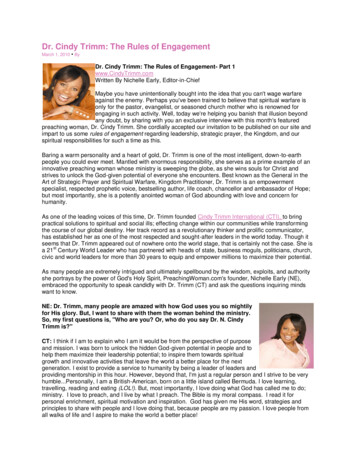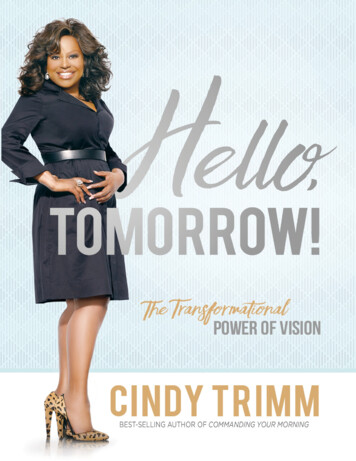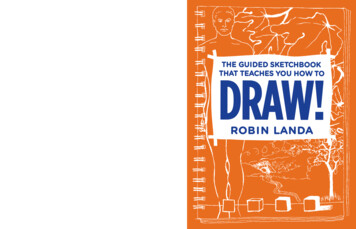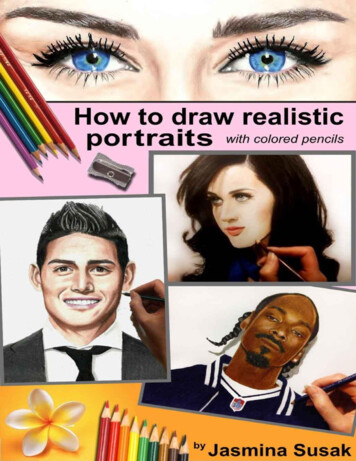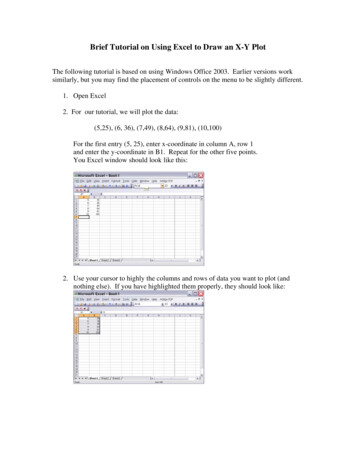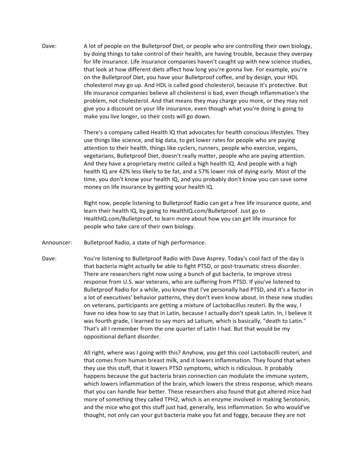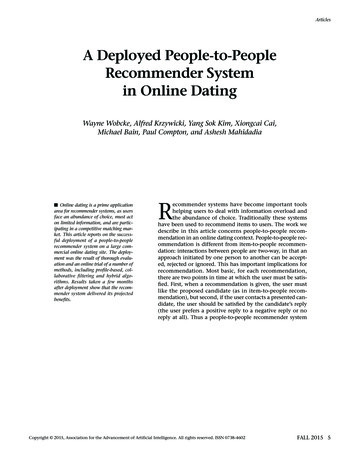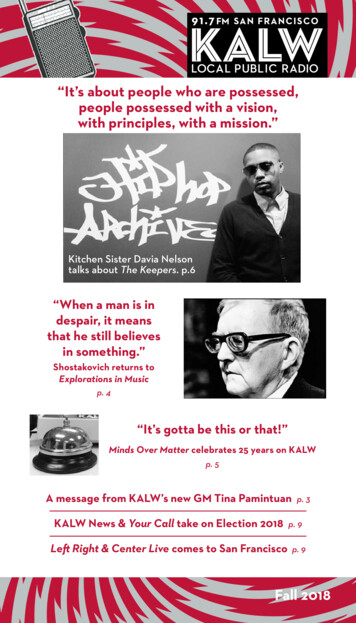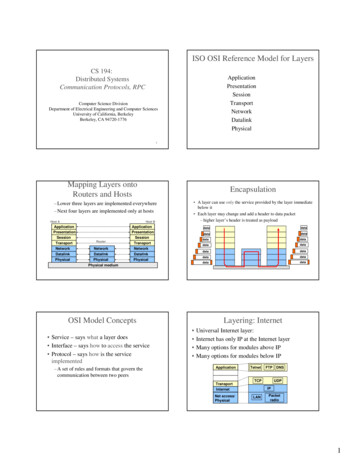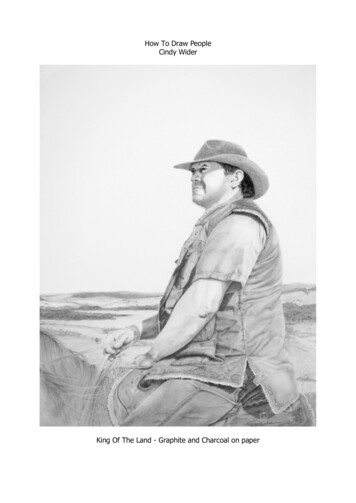
Transcription
How To Draw PeopleCindy WiderKing Of The Land - Graphite and Charcoal on paper
Portrait Of A Voluntary Hero - Charcoal on paper
Queen Of The Family - Graphite On Paper
The Grandparents
The Old Rattler
Isha
Just Me
House Home Haven For The Newly WedsA Woman and Her Cuppa
Portrait Of A Girl With No Name
Red Haired Woman
Two Main Approaches to Drawing the Adult female figure;1. Internal Abbreviated formWith this method, you are visualising the inside skeleton first, then recording what you see bydrawing a stick figure. This method is particularly useful when drawing from life especially if youare trying to catch a figure in motion. You can use this method with a series of very rough andquick sketches. A great idea is to practice the stick figure in a standing pose at first, just to get toknow the proportions of the eight head principle.Idealised adult female at 8 heads high.Note: The ideal proportions of a child at birth is around 3 1/2 to 4 heads tall and at 1 year isapproximately 4 heads high, child of 3 years is 5 heads, 5 years 6 heads at 10 years 7 heads high.A child’s head grows vey slowly, adding only 3 inches all together from the first year to adulthood.At 1 year a child’s head size is about 6” high, at 3years 61/2”, at 5 years it is 7” and at 10 years ithas grown to about 71/2” at 15 years it is an adult size at around 9” high.When we draw children under ten we draw them a little shorter and more chubby than normalbecause it is considered more desirable and appealing in illustration.
Here are some examples of internal abbreviated form drawn as ‘Scribble Gestures’ created in lessthan 20 seconds without the pencil leaving the page. (inspired by the ideas presented in MarkMitchell’s Course, see the last page his website.)
Internal Abbreviated form continued: Construction drawingWith this method, you are once again required to visualise the inside of the human body, howeverthis time instead of limiting your vision to the skeleton alone, you are now visualizing the generalmass of the muscles as well. The skin is then placed over the top in a final outline drawing.The human body is mostly made up of a series of modified (altered) cylinders, spheres and cubeshapes. Once you have successfully positioned these modified basic shapes on your page, the restof the drawing is really quite simple and should all fall naturally into place. It’s all about gettingthe initial angles and proportions right. Many artists draw the stick figure construction first, thenthis type of frame on top of the stick figure before adding the outline and muscles last.
Internal Abbreviated form continued: Construction drawing
2. External Abbreviated formWith this method, you are required to visualise the outside of the human body in its mostsimplified form then draw the abbreviated contours. Look at the general mass of the muscles andoverall movement of the body to do this successfully.
Introduction to Accents (with variation in line)Accents are small marks drawn around the outlines of an object to indicate form. When we useaccents we also draw the outline with varying degrees of widths (also known as variation in line orbroken line.) For example, in some areas there is no need to draw any line whatsoever and wesimply leave a small space or ‘gap’ in the outline drawing. This allows the viewer to make up theimage in their mind and creates a more varied and interesting line other than the usualmonotonous single line that we use for writing.Fig. 3. Accents on a leg and footFig. 4. Accents on a waist and hand Accents are small marks that are made around the outlines of a drawing. They replace the single hard outline. These small marks often taper at either end, travelling from thin to thicker and back to thin aswell as from light to dark and back to light as they blend into the very soft outline of thedrawing. (see Fig.3 & 4 ) They are placed strategically around the composition to also lead the viewer’s eye. Generally these marks are placed in places where the object begins to turn away from the lightor recede back into the distance. Accents help your drawing to appear more interesting to your viewer and more realistic than asingle solid and continual outline.
Before and After Drawings by Students of this courseThe ‘before’ images presented here were completed prior to the student’s first week of tuition.The ‘after’ drawings were completed after studying this course for a total of approximately 63hours over 21 weeks. People enter the course at all levels of ability and similar results are gainedregardless of their level of ability to begin with. Most people who enter the course begin drawingat a twelve year old child level and rapidly progress to drawing professional-standard drawings likethese.Barbara Houghton ‘Before’ self-portraitBarbara Houghton ‘After’ self-portraitLeslie Macpherson ‘Before’ self-portraitLeslie Macpherson ‘After’ self-portraitKatrina Coltzau ‘Before’ self-portraitKatrina Coltzau ‘After’ self-portrait
Lois Naab ‘Before’ self-portraitAnn Richter ‘Before’ self-portraitClaire Courtemanche ‘Before’ self-portraitLois Naab ‘After’ self-portraitAnn Richter ‘After’ self-portraitClaire Courtemanche ‘After’ self-portrait
Jack Gilbert ‘Before’ self-portraitNorma Corbin ‘Before’ self-portraitDeepti Mohile ‘Before’ self-portraitjack Gilbert ‘After’ self-portraitNorma Corbin ‘After’ self-portraitDeepti Mohile ‘After’ self-portrait
Some great extra resources and free tutorials:Andrew Loomis:You will see some free tutorials on there and one in particular titled ‘Figure Drawingfor all its worth.’ loomis-art-instructiondownloads/Drawing Tutorials Online (Matthew Archambault):I am affiliated with this website and you can subscribe to it for a fee but they do alsohave a great free video tutorial if you sign up for their newsletter ffID Drawpj I do consider this one to be one of the bestsites on the internet for drawing the human body in a traditional fine art way. I love itand it’s extremely comprehensive.Drawspace.com (Brenda Hoddinott):Great free tutorials on many things to do with drawing people. For facial proportions of proportions-of-babiesFor muscles on the face: -your-skinfacial-musclesGuidelines for the heights of people: -the-heights-of-peopleHow to draw -studies-poses-and-photo-references/#anatomyHow To Be a Childrens Book Illustrator (Mark com/drawingsecret/ enter your name and email addressto receive these fantastic free tutorials from Mark. Then consider enrolling into his course if youare interested in becoming a childrens book illustrator. This course is definitely the best of its kindon the internet. Mark shares his knowledge openly and freely with a wealth of information. Thereis also a really wonderful and warm online community to join in with here.Five Pencil Method (Darrel Tank):http://www.fivepencilmethod.com/ one of the best websites for drawing portraits as fine art orfor commissioned portraits, Darrel has a whole heap of free videos but his ‘How To Draw APortrait’ dvd is outstanding. Consider purchasing the whole series, its really worth every bit. Thereis a massive bubbling online community here all cheering each other on.Water Colour Painting s.com/techniques all free too!for a very comprehensive site on watercolour
Two Main Approaches to Drawing the Adult female figure; 1. Internal Abbreviated form With this method, you are visualising the inside skeleton first, then recording what you see by drawing a stick figure. This method is particularly useful when drawing from life especially if you are trying to catch a figure in motion. You can use this method with a series of very rough and quick sketches. A .
